
CELEBRATION OPENING OF HEINLENVILLE PARK
CELEBRATION OPENING OF HEINLENVILLE PARK
BY Gerrye Wong October 10, 2023
A grand celebration was held today to formally open HEINLENVILLE PARK at Six and Taylor Streets in San Jose, built on the former turn of the century site of the Chinese community called Heinlenville. That Chinatown called Heinlenville housed Chinese citizens of San Jose from late 1800s until dwindling occupancy came during the 1930s. The remnants of that Chinatown was taken over by the city due to loss of population and unpaid taxes with the last remaining building, the Ng Shing Gung temple building, torn down in 1949. The opening of Heinlenville Park today marked a milestone of remembrance for all 200 attendees from all ethnicities and walks of life. I’d like to share my personal connection with this Heinlenville Park area.
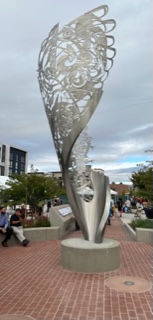


Caption: Sheltering Wing Sculpture Shinto Service San Jose Mayor Matt Mahan
I was familiar with the area while growing up in San Jose during the mid 1930s-1947. I remembered visiting the temple building with my father, and in my child’s mind, thought of it as an old scary place. However in 1946, my father, Bill Kee, a prominent San Jose businessman managing the National Dollar Store in downtown San Jose, was asked by the small Chinese community to testify before the San Jose City Council requesting not to tear down the building because of lack of payment of taxes. He received for the community a three year reprieve extension following his testimony, but in 1949 we had moved away, and the dwindling remaining Chinese community could not raise the needed tax payment nor have a spokesman to plea for more leniency, so the building, built in 1888, was demolished by the city in 1949 and used the land as a warehouse storage area – until now when new buildings and this Heinlenville Park finally came into being after almost a decade in the planning.
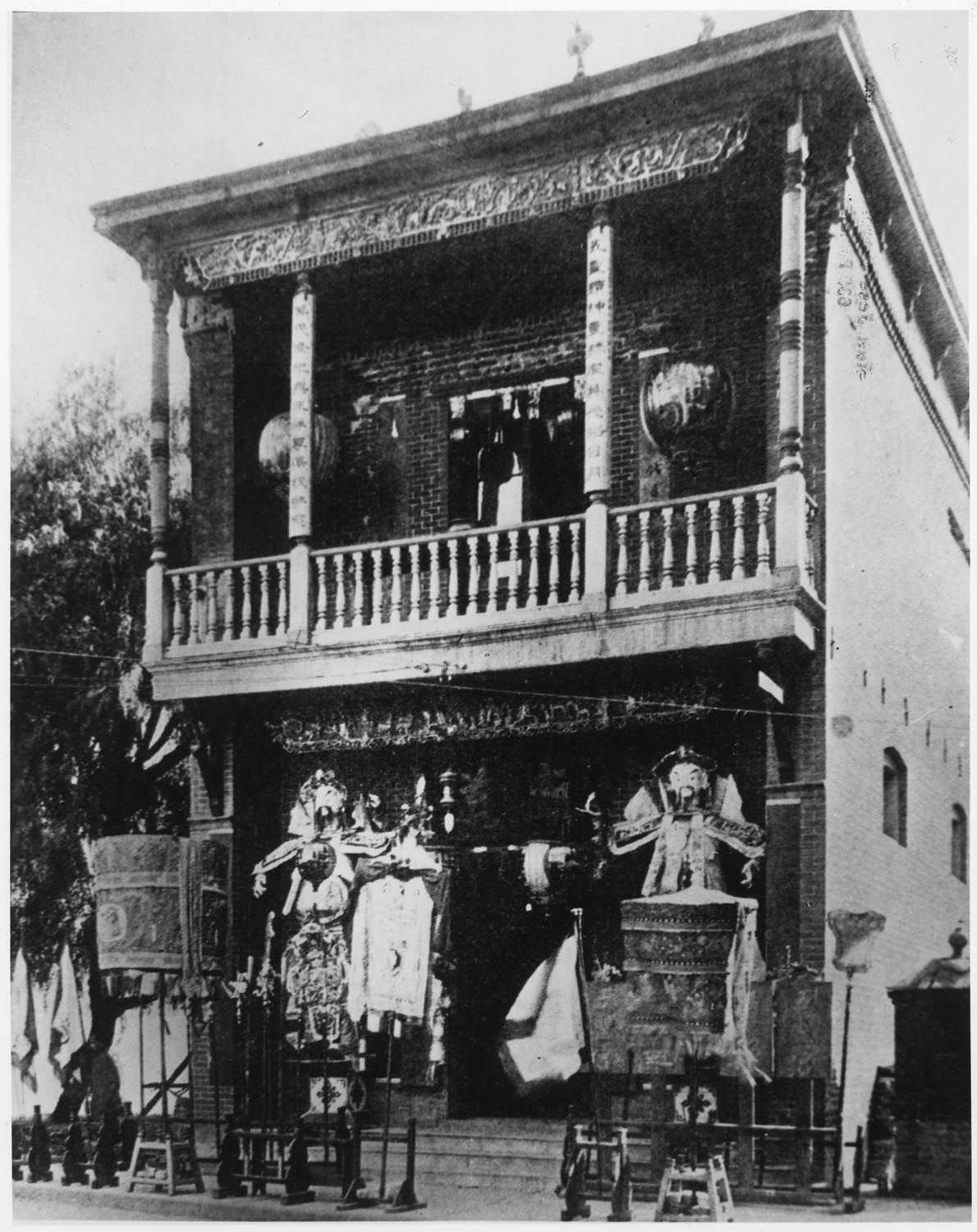
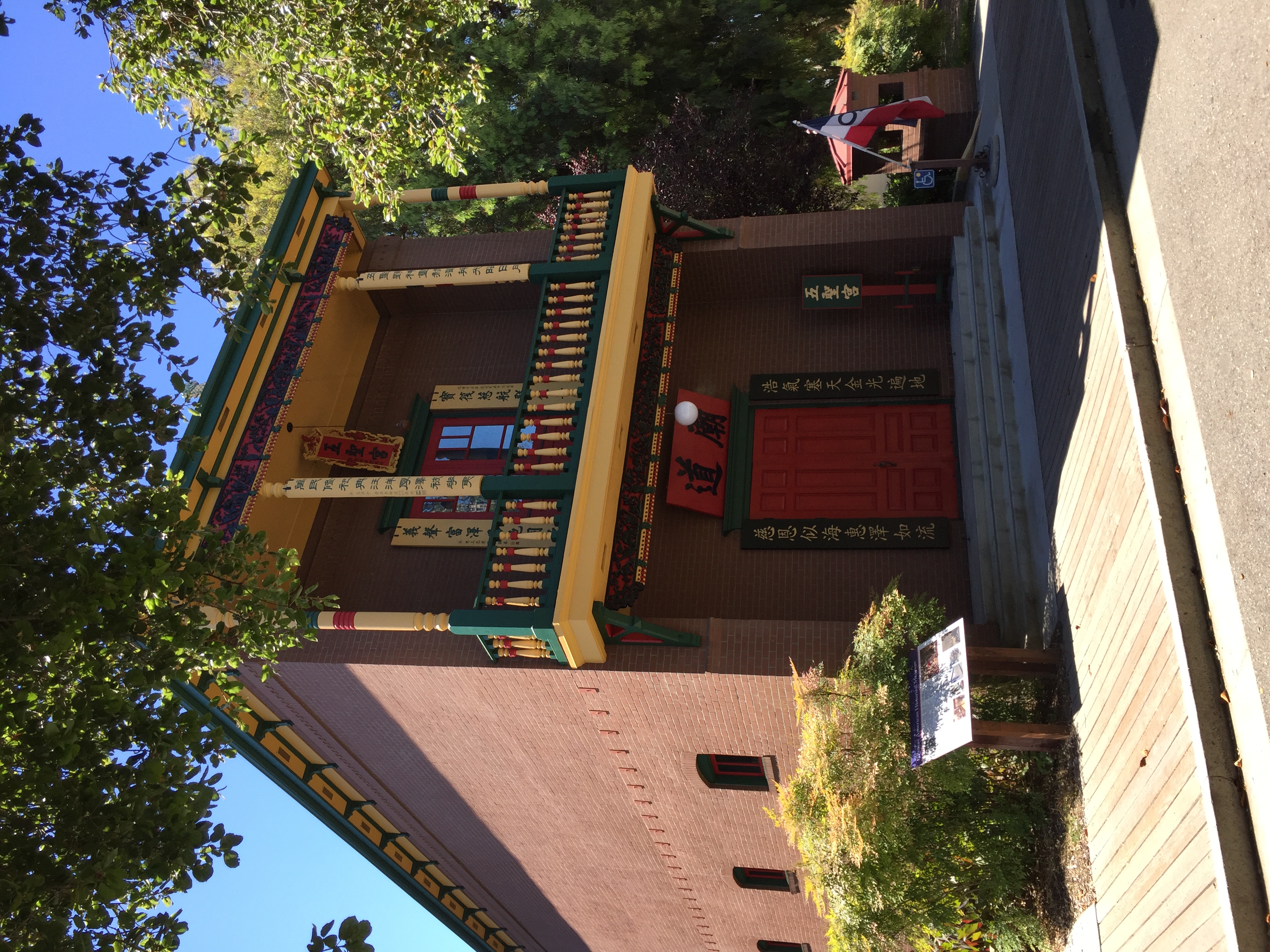
Caption: 1888 Ng Shing Gung Temple before demolition 1991 Ng Shing Gung replica – Chinese American Historical Museum
Luckily, some historians within the City of government in 1949 , must have had some foresight to save the historic gilded gold altar, so had it dismantled and stored under the open air bleachers of the San Jose Municipal Stadium. Amazingly the pieces stayed there intact for 40 years until in 1989 my CHINESE HISTORICAL AND CULTURAL PROJECT built a replica of the Ng Shing Gung temple building, and restored the historic altar as its shining star in its Chinese American Historical Museum. The museum, upon completion, was given to the City of San Jose and placed in the city’s History San Jose park in 1991, the sole replica building remaining of that once bustling Chinatown called Heinlenville. It remains a symbol of the last Chinatown, Heinlenville, where the original Ng Shing Gung building once stood , and where Heinlenville Park now stands.

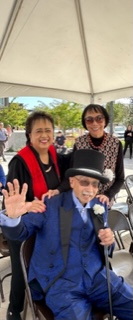
Caption: Leaders receive Proclamation Celebration guests Nathan Louie, Marie Lee, Gerrye Wong
So I am happy that the area of 6th and Taylor now has a beautiful park among its high rise apartment buildings, and that the Shea developers worked with the Japanese community and city planners to designate an area for a park like setting with remembrances on floor panels and a wall of photos telling of the site’s original inhabitants who lived in San Jose’s last Chinatown called Heinlenville. Revisiting the site today for the celebration made me feel very nostalgic thinking of how my father tried to save the last remaining building standing there in 1946, the Ng Shing Gung building, which coincidentally some 40 years later I helped rebuild to restore it into a museum of Chinese American history. Some people might name that serendipity, I think.

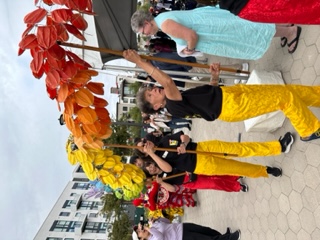
Caption: Heinlenville Park ribbon cutting CHCP Hoong the Dragon at ceremony
I hope and invite all of you to come and visit our CHCP museum someday in History San Jose park, as well as Heinlenville Park, as the latter borders Japantown, one of the last remaining three Japantowns in the US, itself a historic phenomenon. At our museum, you will see artifacts of Heinlenville’s inhabitants and learn more about the rich history of Chinese Americans living in Santa Clara valley since the early pioneers from 1860s to the present.


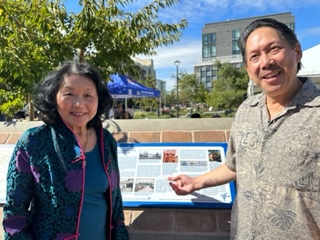
Caption: SJ Councilman Omar Torres CHCP leaders Debbie GongGuy & Emily Yue Connie Yu & Rodney Lum
——————-
Below is an article by my friend, columnist Sal Pizarro, for the Bay Area Mercury News, which tells of today’s ribbon cutting ceremony better than I could have described the gala occasion.
By SAL PIZARRO | spizarro@bayareanewsgroup.com | Bay Area News Group
PUBLISHED: October 10, 2023 at 5:01 p.m. | UPDATED: October 10, 2023 at 5:21 p.m.
Community members held a ceremony to celebrate the opening of the new park which is named after John Heinlen, a German immigrant who rented to Chinese residents after the Chinatown neighborhood was burned in the late 1800s. (Aric Crabb/Bay Area News Group)
Heinlenville Park may be San Jose’s newest open urban space, but it comes with more than a century of history to its name, befitting its location in the city’s historic Japantown neighborhood. A few hundred people attended the grand opening ceremony Tuesday afternoon, which opened with a blessing and ended with a celebratory lion dance and a sake toast.
“It’s not every day we get to open a new public space, certainly not one so beautiful. This park is exceptional,” said Mayor Matt Mahan, who called Japantown a “community that is passionate about celebrating, commemorating and living the culture of our Japanese community while also welcoming change and newcomers.”
Visitors stroll through Heinlenville Park on Tuesday, Oct. 10, 2023, in San Jose, Calif. Community members held a ceremony to celebrate the opening of the new park which is named after John Heinlen, a German immigrant who rented to Chinese residents after the Chinatown neighborhood was burned in the late 1800s. (Aric Crabb/Bay Area News Group)
After a suspected arson fire in 1887 destroyed the Chinatown on Market Street downtown, John Heinlen — a German immigrant farmer and businessman who owned property just north of downtown — answered an act of bigotry with one of acceptance. He provided inexpensive leases to the local Chinese community and endured condemnation from the city’s white community.
The area became a hub of Chinese cultural activities in San Jose for the next five decades, centered around the ornate Ng Shing Gung temple (of which the Chinese Historical and Cultural Project built at History Park). The success of Heinlenville encouraged Japanese residents to settle in the area, and that gave birth to San Jose’s Japantown, which is now one of just three remaining in the United States.
Historian Connie Young Yu, right, was among the visitors looking over interpretive signage in Heinlenville Park on Tuesday, Oct. 10, 2023, in San Jose, Calif. Community members held a ceremony to celebrate the opening of the new park which is named after John Heinlen, a German immigrant who rented to Chinese residents after the Chinatown neighborhood was burned in the late 1800s. (Aric Crabb/Bay Area News Group)
Historian Connie Young Yu said Heinlenville ended after 44 years largely because of the Chinese Exclusion Act, and the area became the city’s corporation yard for many decades with Japantown next to it. She heard stories of Heinlen’s generosity from her grandfather, who fled the Market Street fire, and her father, who was born in Heinlenville.“You will not read about the legacy of John Heinlen in history, but you will experience it here,” she said. “This park embodies a story San Jose should be proud of, one that should inspire us all and generations to come.” Shea Properties built the park to complement its Sixth and Jackson apartments and plans to grant it to the city. Features within the park reflect its history, too.
“Sheltering Wing,” a 19-foot-tall metal sculpture created by Stoller Studios in San Jose, tells the story of the evolving and inclusive community through images of “Asian positivity” in the metal-lace artwork representing bamboo, peaches, koi, origami cranes, butterflies and chrysanthemums, among others. There’s an interpretive sign exploring the history of the area and a paved “history path” that recounts the Chinese American experience. Japantown sculptor Ken Matsumoto created the stonework in the north garden, part of the landscape designed by Jason Victor.Notably, the park is mostly hardscape with raised gardens and trees, along with tables with built-in checkers/chessboards and a children’s play space. But there’s no grass, and that’s intentional because the community asked for space that could accommodate events like flea markets and public gatherings for the multicultural area, which includes the Filipino Community Center right across the street. “This park is a testament to the collective efforts of so many people,” said Sean McEachern of Shea Properties. “Everyone on the team knew the importance of what we needed to deliver.”
